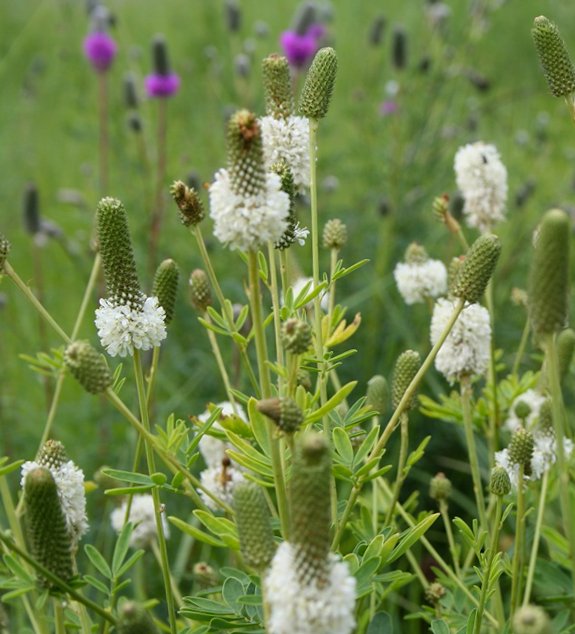 Image 1 of 6
Image 1 of 6

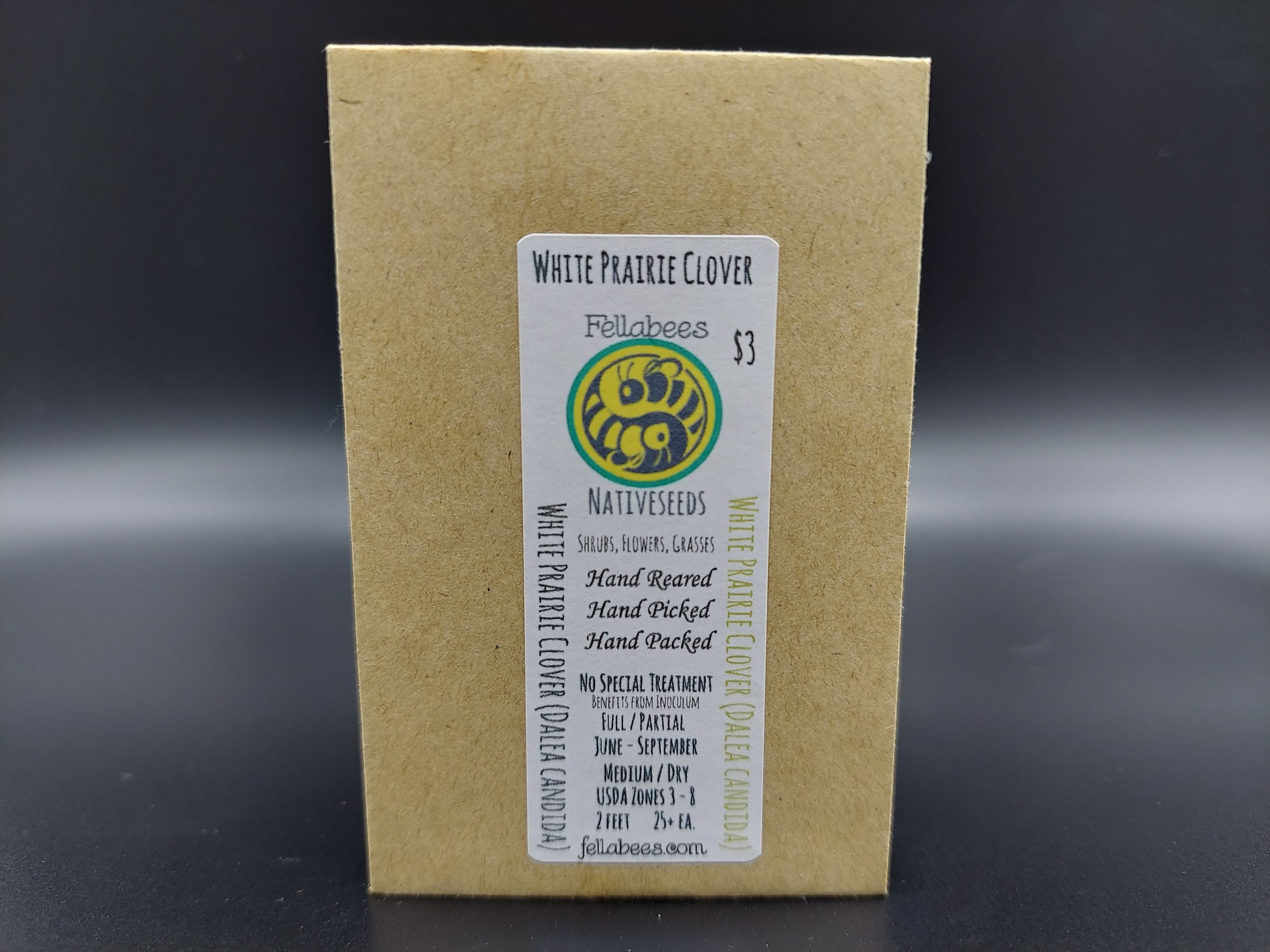 Image 2 of 6
Image 2 of 6

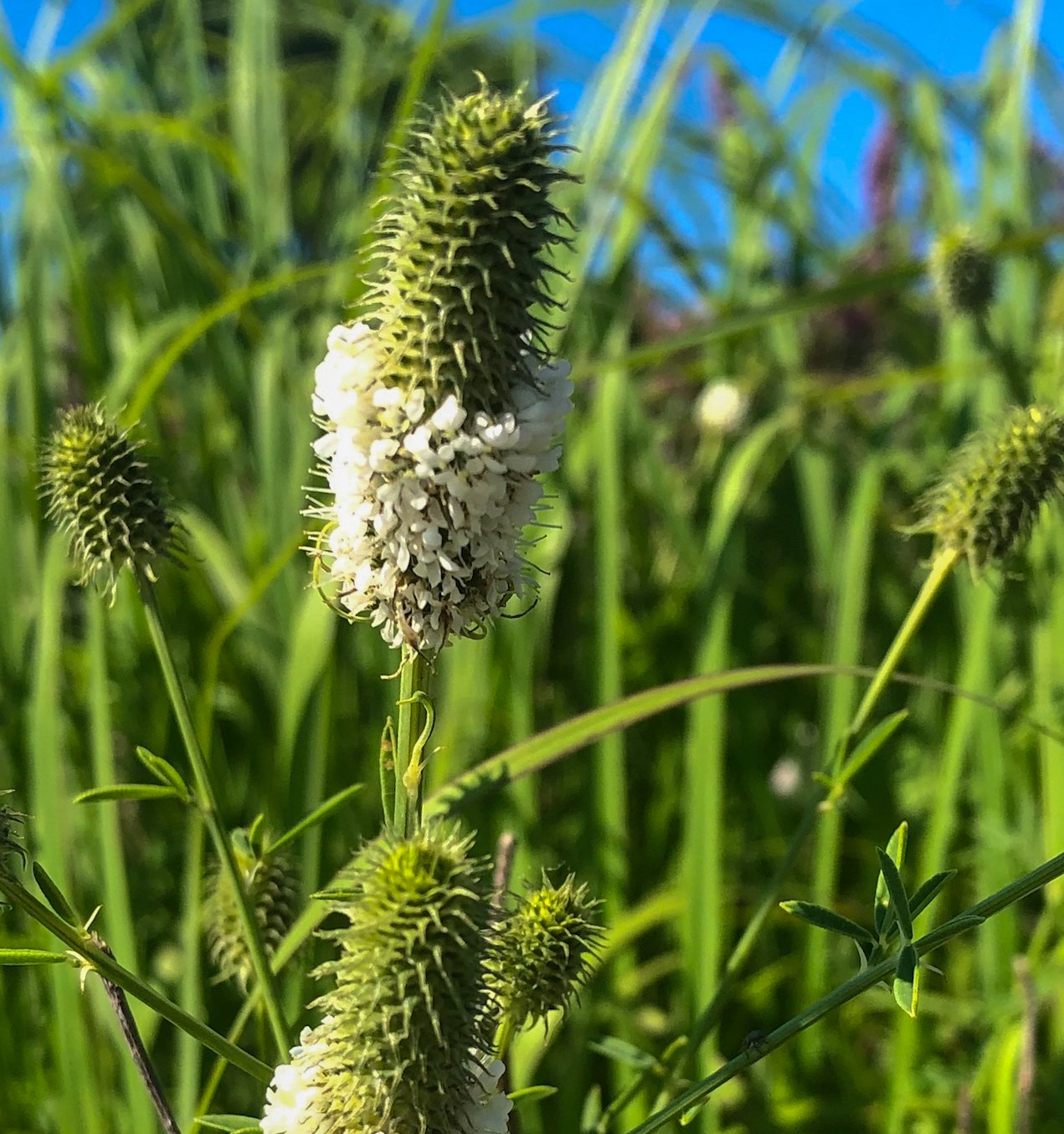 Image 3 of 6
Image 3 of 6

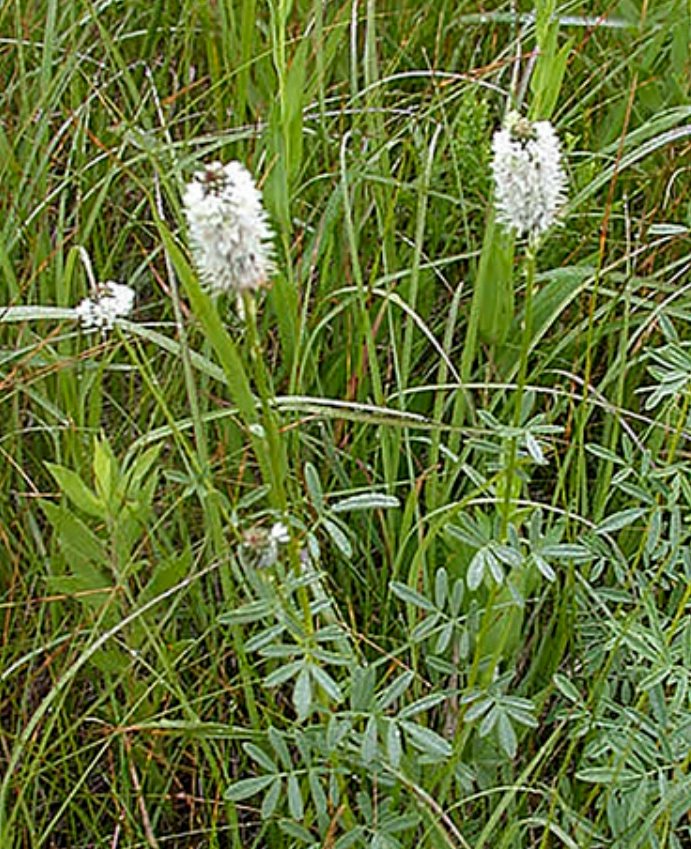 Image 4 of 6
Image 4 of 6

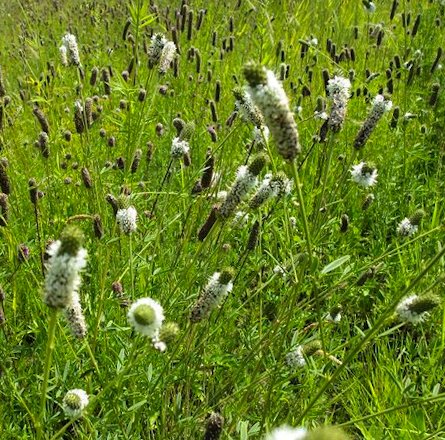 Image 5 of 6
Image 5 of 6

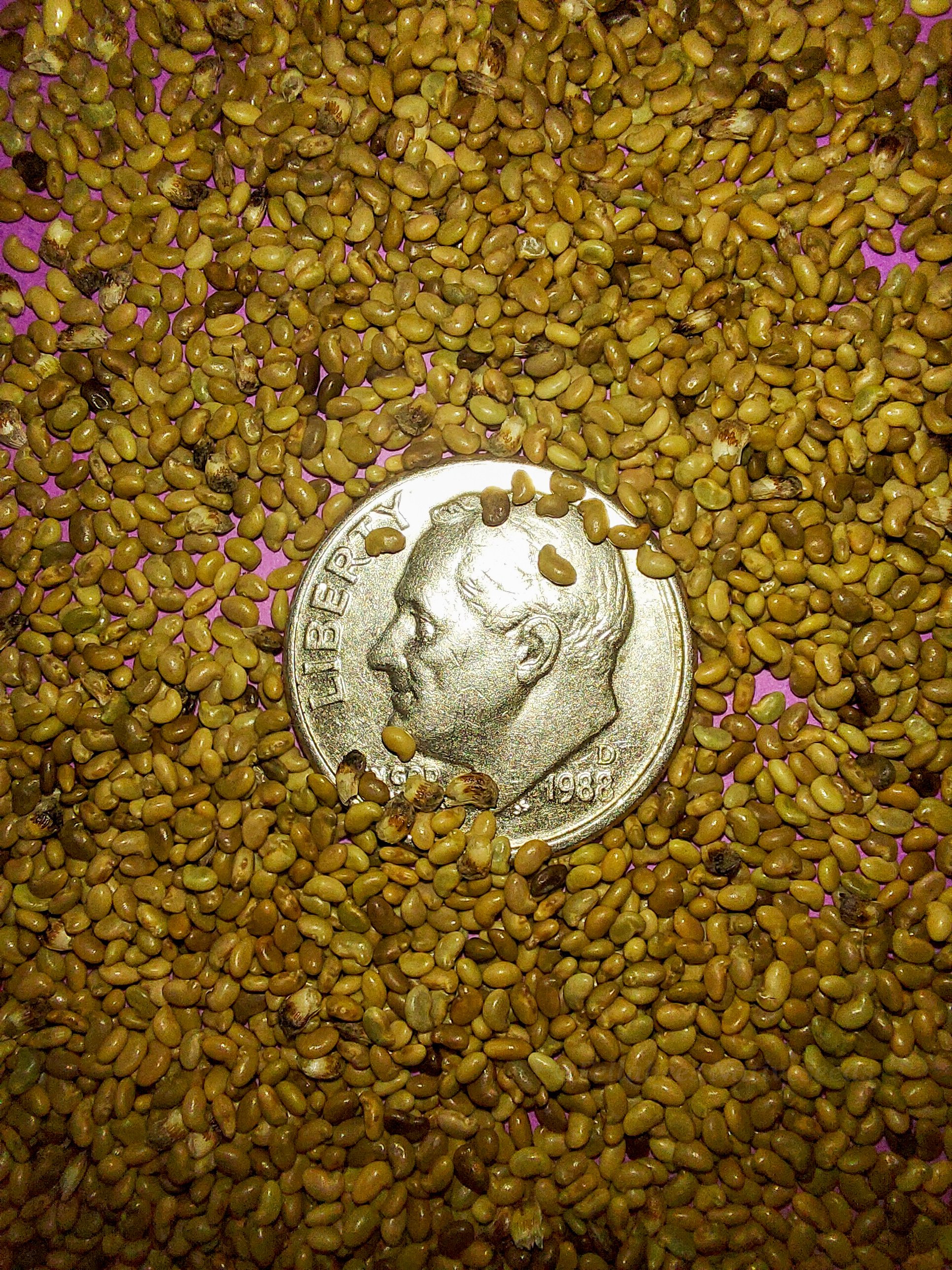 Image 6 of 6
Image 6 of 6







White Prairie Clover (Dalea candida)
White Prairie Clover (Dalea candida)
Dalea candida is a species of flowering plant in the legume family known most by its common name White Prairie Clover.
It is native to North America, where it can be found throughout central Canada, Central United States, and into Northern Mexico. It can sometimes be found outside its range as an introduced species.
White Prairie Clover grows in many types of habitat, including several types of prairie, foothills, woods, forests, and disturbed areas.
It is extremely popular with pollinators and, as it is a legume, it is a nitrogen fixer. White Prairie Clover is classified by the USDA as a "high" nitrogen fixer, a category few native plants fit into.
It serves as a larval host to the Clouded Sulphur Butterfly, The Marine Blue Butterfly, Reakirt's Blue, and The Southern Dogface Butterfly.
This plant is considered present, native, and rare in several counties of the states of Kentucky, Tennessee, and Georgia.
Plant Details
USDA Zones: 4-8
Germination Needs: No special treatment needed, however this plant may benefit from an Inoculum. Inocuoulum is naturally occouring in most soils, however this may be a needed consideration if the soil is sterile, or of low quality.
Life Cycle: Perennial
Sun Exposure: Full to Partial
Soil Moisture: Medium, Medium-Dry, Dry
Plant Spacing: 1-1½ feet
Height: 2 feet
Bloom time: June, July, August, September
Bloom Color: White
Advantages :
Pollinator Favorite: butterflies, moths, bees, wasps, beetles
Bird Favorite: seeds, insects, fruit, nectar, nesting, perchs.
Deer Resistant: Yes
Excellentin the home landscape!
Native to: Wisconsin, Minnesota, Iowa, Illinois, Indiana, Kentucky, Tennessee, Georgia, Alabama, Mississippi, Louisiana, Arkansas, Missouri, North Dakota, Montana, South Dakota, Wyoming, Nebraska, Kansas, Colorado, Utah, Arizona, New Mexico, Oklahoma, and Texas.
.
.
Packet quantities:
We pride ourselves on ethical, hands on, ecological management, using no mechanical or chemical methods whatsoever.
All of our native seed is hand reared, hand picked, and hand packed from native prairies under our exclusive management, never breaking chain of custody from the field until it is sent to you. Each packet is hand prepared for shipment by us, directly.
Small seed species will contain greater than 20-25 seed
Large seed species will contain greater than 10-15 seed
It is our mission to spread the wealth of native plant and pollinator ecological sustainability, and educate back yard gardeners as well as corporate and government entities in how to germinate, grow, and benefit from native synergies.
Thank you for your support, it is because of you, that we can grow together to do, what we do.🐛🦋🐝🐞🌾🌱🌼🧡
White Prairie Clover (Dalea candida)
Dalea candida is a species of flowering plant in the legume family known most by its common name White Prairie Clover.
It is native to North America, where it can be found throughout central Canada, Central United States, and into Northern Mexico. It can sometimes be found outside its range as an introduced species.
White Prairie Clover grows in many types of habitat, including several types of prairie, foothills, woods, forests, and disturbed areas.
It is extremely popular with pollinators and, as it is a legume, it is a nitrogen fixer. White Prairie Clover is classified by the USDA as a "high" nitrogen fixer, a category few native plants fit into.
It serves as a larval host to the Clouded Sulphur Butterfly, The Marine Blue Butterfly, Reakirt's Blue, and The Southern Dogface Butterfly.
This plant is considered present, native, and rare in several counties of the states of Kentucky, Tennessee, and Georgia.
Plant Details
USDA Zones: 4-8
Germination Needs: No special treatment needed, however this plant may benefit from an Inoculum. Inocuoulum is naturally occouring in most soils, however this may be a needed consideration if the soil is sterile, or of low quality.
Life Cycle: Perennial
Sun Exposure: Full to Partial
Soil Moisture: Medium, Medium-Dry, Dry
Plant Spacing: 1-1½ feet
Height: 2 feet
Bloom time: June, July, August, September
Bloom Color: White
Advantages :
Pollinator Favorite: butterflies, moths, bees, wasps, beetles
Bird Favorite: seeds, insects, fruit, nectar, nesting, perchs.
Deer Resistant: Yes
Excellentin the home landscape!
Native to: Wisconsin, Minnesota, Iowa, Illinois, Indiana, Kentucky, Tennessee, Georgia, Alabama, Mississippi, Louisiana, Arkansas, Missouri, North Dakota, Montana, South Dakota, Wyoming, Nebraska, Kansas, Colorado, Utah, Arizona, New Mexico, Oklahoma, and Texas.
.
.
Packet quantities:
We pride ourselves on ethical, hands on, ecological management, using no mechanical or chemical methods whatsoever.
All of our native seed is hand reared, hand picked, and hand packed from native prairies under our exclusive management, never breaking chain of custody from the field until it is sent to you. Each packet is hand prepared for shipment by us, directly.
Small seed species will contain greater than 20-25 seed
Large seed species will contain greater than 10-15 seed
It is our mission to spread the wealth of native plant and pollinator ecological sustainability, and educate back yard gardeners as well as corporate and government entities in how to germinate, grow, and benefit from native synergies.
Thank you for your support, it is because of you, that we can grow together to do, what we do.🐛🦋🐝🐞🌾🌱🌼🧡
White Prairie Clover (Dalea candida)
Dalea candida is a species of flowering plant in the legume family known most by its common name White Prairie Clover.
It is native to North America, where it can be found throughout central Canada, Central United States, and into Northern Mexico. It can sometimes be found outside its range as an introduced species.
White Prairie Clover grows in many types of habitat, including several types of prairie, foothills, woods, forests, and disturbed areas.
It is extremely popular with pollinators and, as it is a legume, it is a nitrogen fixer. White Prairie Clover is classified by the USDA as a "high" nitrogen fixer, a category few native plants fit into.
It serves as a larval host to the Clouded Sulphur Butterfly, The Marine Blue Butterfly, Reakirt's Blue, and The Southern Dogface Butterfly.
This plant is considered present, native, and rare in several counties of the states of Kentucky, Tennessee, and Georgia.
Plant Details
USDA Zones: 4-8
Germination Needs: No special treatment needed, however this plant may benefit from an Inoculum. Inocuoulum is naturally occouring in most soils, however this may be a needed consideration if the soil is sterile, or of low quality.
Life Cycle: Perennial
Sun Exposure: Full to Partial
Soil Moisture: Medium, Medium-Dry, Dry
Plant Spacing: 1-1½ feet
Height: 2 feet
Bloom time: June, July, August, September
Bloom Color: White
Advantages :
Pollinator Favorite: butterflies, moths, bees, wasps, beetles
Bird Favorite: seeds, insects, fruit, nectar, nesting, perchs.
Deer Resistant: Yes
Excellentin the home landscape!
Native to: Wisconsin, Minnesota, Iowa, Illinois, Indiana, Kentucky, Tennessee, Georgia, Alabama, Mississippi, Louisiana, Arkansas, Missouri, North Dakota, Montana, South Dakota, Wyoming, Nebraska, Kansas, Colorado, Utah, Arizona, New Mexico, Oklahoma, and Texas.
.
.
Packet quantities:
We pride ourselves on ethical, hands on, ecological management, using no mechanical or chemical methods whatsoever.
All of our native seed is hand reared, hand picked, and hand packed from native prairies under our exclusive management, never breaking chain of custody from the field until it is sent to you. Each packet is hand prepared for shipment by us, directly.
Small seed species will contain greater than 20-25 seed
Large seed species will contain greater than 10-15 seed
It is our mission to spread the wealth of native plant and pollinator ecological sustainability, and educate back yard gardeners as well as corporate and government entities in how to germinate, grow, and benefit from native synergies.
Thank you for your support, it is because of you, that we can grow together to do, what we do.🐛🦋🐝🐞🌾🌱🌼🧡
